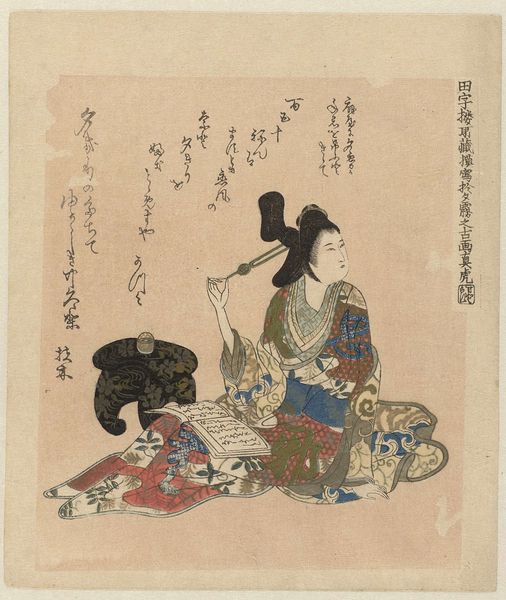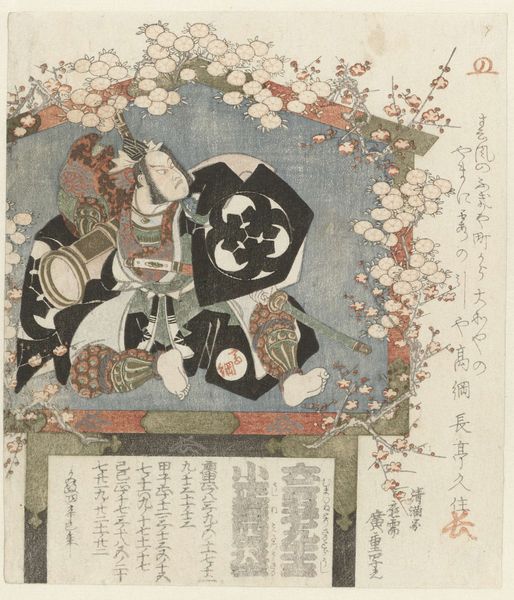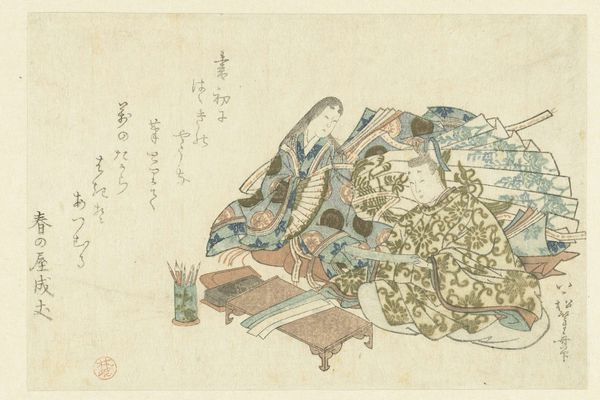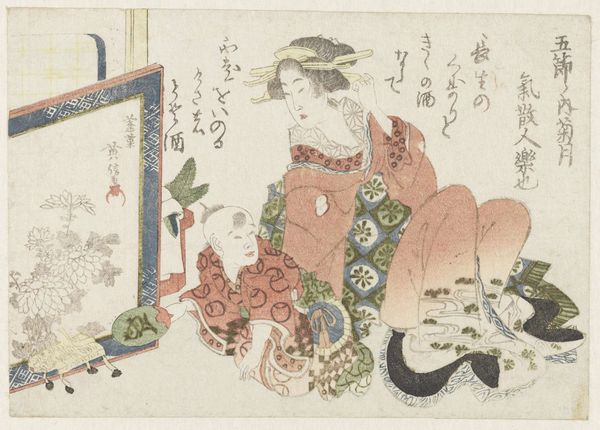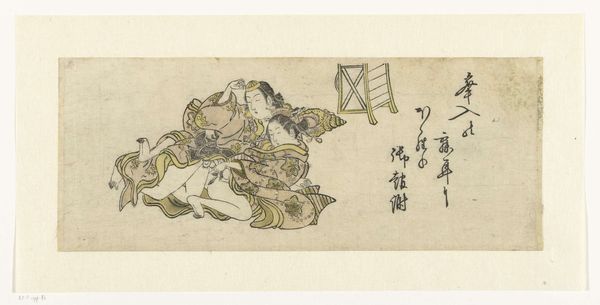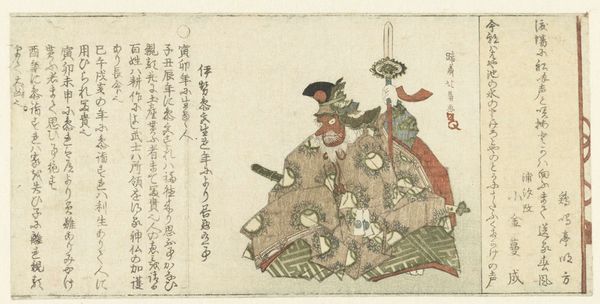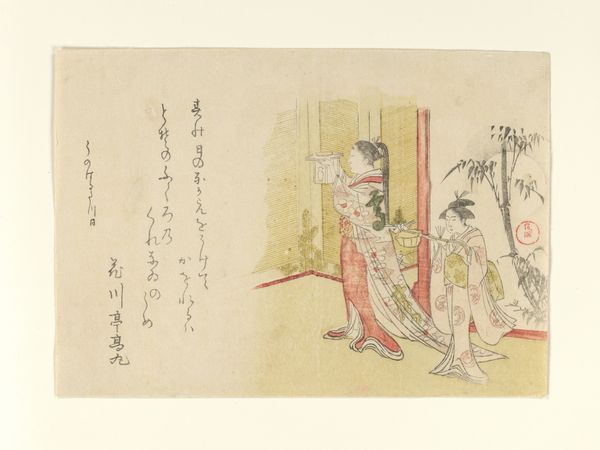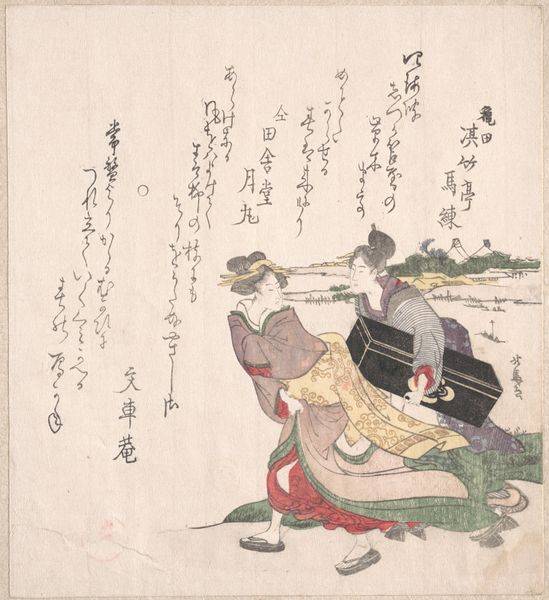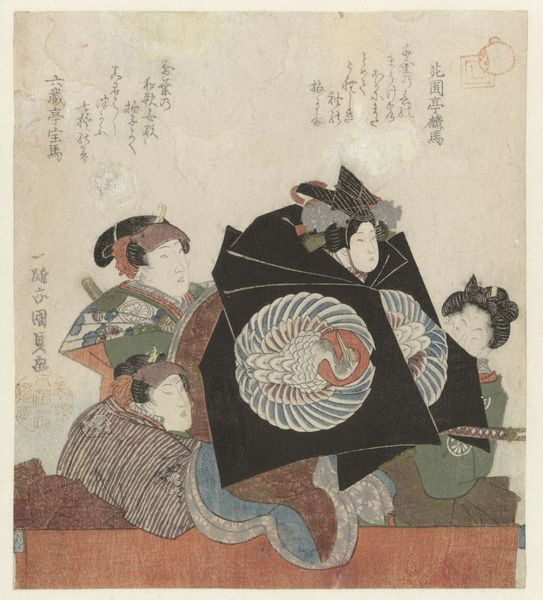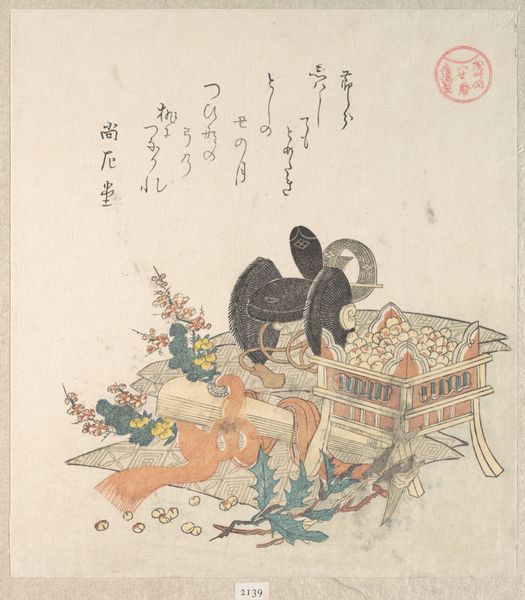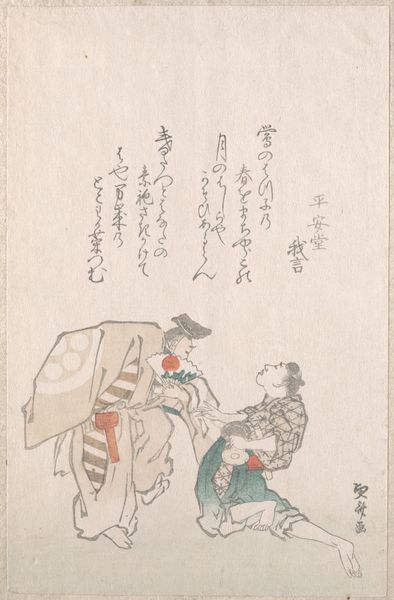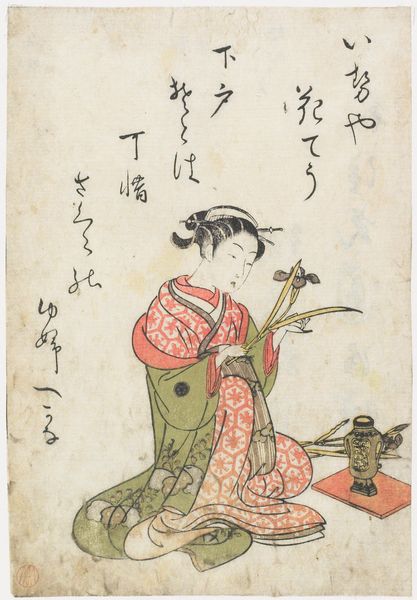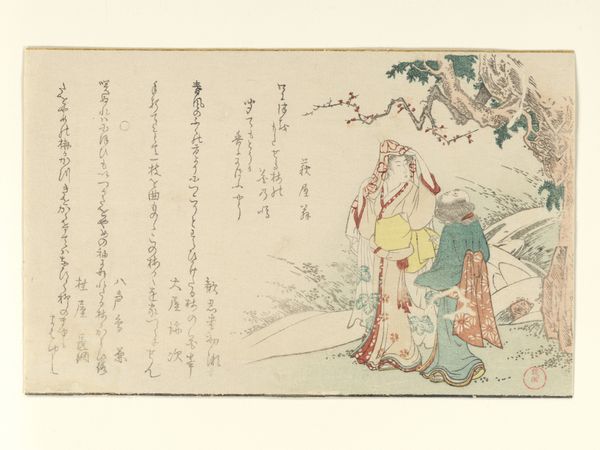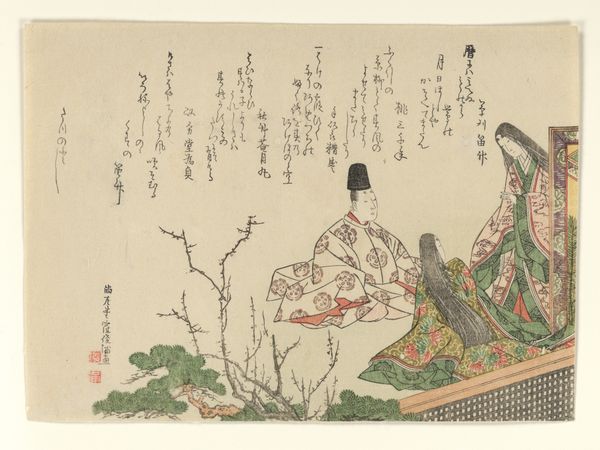
print, woodblock-print
# print
#
asian-art
#
ukiyo-e
#
woodblock-print
#
watercolour illustration
Dimensions: height 188 mm, width 248 mm
Copyright: Rijks Museum: Open Domain
Curator: Welcome. Before us we have an ukiyo-e print titled "Kintoki Chasing a Demon," created sometime between 1815 and 1820. Editor: It strikes me as both playful and slightly unsettling. The colours are muted, but the dynamic pose of the figure makes it seem full of pent-up energy. Curator: Precisely. What we're seeing here is a woodblock print, and the process is as interesting as the image itself. Consider the labour involved—carving the blocks, the careful inking, and the precise printing. This was a mass-produced item, a commodity available to a relatively wide segment of the population. Editor: That availability is important. How does access to this print shape narratives around heroism, gender, and class? Kintoki is a legendary figure. Are there folkloric traditions? Curator: Absolutely. Kintoki, or Kintaro, is a folk hero known for his superhuman strength and courage. In this print, we see him, probably as a young man, chasing a demon. What interests me is how the artist is drawing from these archetypes for an emerging consumer base during the Edo period. Editor: I'm intrigued by the imagery. Notice the papers suspended in the upper register; those strike me as shide associated with Shinto purification rituals. Could there be implications for a cleansing of moral or physical ailment within that culture? Curator: Interesting perspective! Looking at the materiality again, the texture achieved with woodblock is so distinctive. Notice how it allows for the conveyance of linear detail. But the flat rendering and selective use of color emphasize a stylized form over pure realism. There’s clearly an interplay between established crafts and aesthetic choices in response to larger shifts in society. Editor: The act of chasing then, within a wider context, can be understood as an intersectional issue: one of spiritual defense, and economic or political progress that relies on gendered or class ideals that often leave groups out of their protective circle. Curator: Indeed. When considering the object’s original purpose, this print underscores a significant historical narrative where art’s meaning depended heavily on cultural knowledge embedded within social contexts, shaped as much by tradition as commerce. Editor: Thanks to that, we have peeled back several layers in the print’s interpretation. I appreciate your careful attention to both its creation and circulation.
Comments
No comments
Be the first to comment and join the conversation on the ultimate creative platform.
